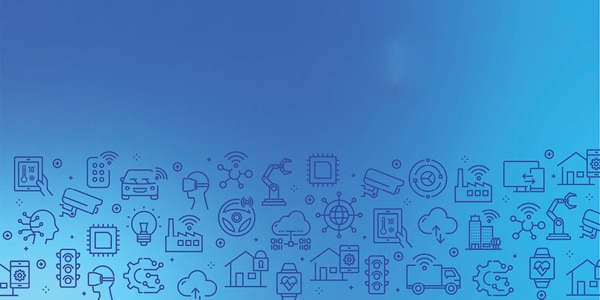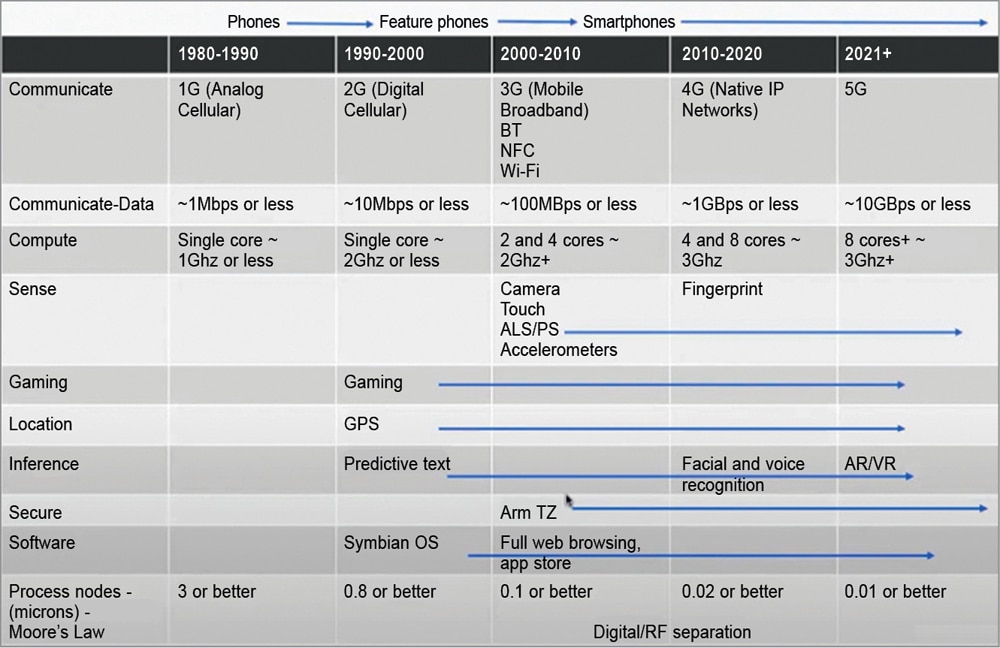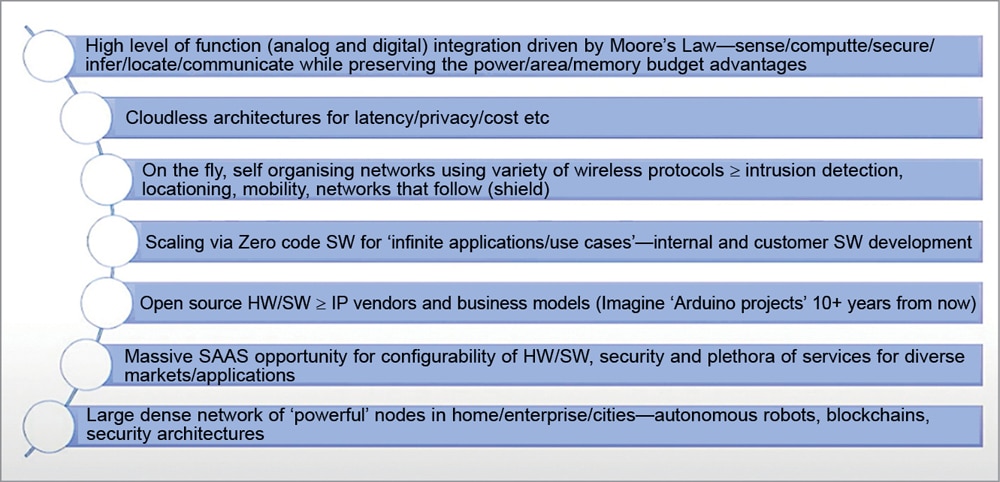
Manish Kothari is Senior Vice President for Software Development at Silicon Labs. He believes that IoT can disrupt many industries over the next decade. Manish Kothari, Senior Vice President of Software Development at Silicon Labs, spoke about IoT’s future and challenges in his keynote speech to the VLSI Design Conference 2022.
Automation is vital to improving safety, comfort, and efficiency in today’s world. The Internet of Things is responsible for gathering and processing the data that is needed to achieve automation.
IoT, in layman’s language, is the process of connecting various applications and sensors with the cloud. Or connecting them with the internet by using different wireless protocols. IoT has improved quality of life, but it has also increased complexity.
IoT is both simple and complex
IoT solutions may seem simple, but they aren’t. An embedded system is a device that performs a simple task. This can be done by a smartphone or an old microcontroller.
It is not about completing the task or gathering data, but rather doing it all in a system with limited space, budget, and power that can run for many years without human intervention. In an IoT, security is of paramount importance. The IoT solution should also be relevant over a period of time, i.e. the product and all its components must remain current for at least five to ten years.
Manish says that the IoT solution will last at least 5-10 years. Hardware and software cannot be obsolete. You have to be able upgrade your devices’ capabilities, your hardware, and your software, until the end user has the product.
Selecting the Right SoC
The IoT system must be able to communicate, sense, compute, and perform computations while also taking into account the security of both the system and the data. This requires tight integration between hardware and software architecture. Designers must design products that are compact, run on minimal power and use very low bandwidth, while remaining extremely cost-effective.
The selection of the best system-on chip (SoC) will be critical to achieving all this. SoCs are one of the most important components for integrating the various components into an embedded system.
The SoCs need to be able to last years, and in some cases even over a decade, on a coin-cell battery. For a successful IoT solution, a tight integration is required. Engineers are working to solve the problem by simplifying inferencing. We can see the progress of Micro Edge.
Inference at Micro Edge
Inference is converting raw data from sensors and IoT devices to actionable information. We have seen the development of Micro Edge in the inference. Micro Edge, although it sounds fancy, is simply where your sensors or devices are located.
Manish says, “When you inferencing at the sensor or device, you take care of security. You send that inferred or inference as opposed to live data. It gives you a lower latency. It is more cost-effective and secure.
Need for configurable system
IoT applications can be very varied. We have a wide range of applications, from a lightbulb to a health monitoring system, machinery in a manufacturing facility to asset tracking systems.
It is therefore not possible to design a solution that fits all situations. It is not possible for a company, because it’s a low-cost option, to develop R&D for each product from scratch. You must do quick turn derivatives in order to stay relevant.
There are also industrial and commercial clients with large volume requirements that want their own ecosystems, not Google, Amazon etc., for privacy, security and confidentiality. New players can tap into a variety of IoT opportunities.
We have a variety of applications and micro-verticals with different requirements in each vector. Whether it’s sense requirements or compute requirements, we can do that. Manish adds, “Your hardware-software must be configurable.”
Find the right opportunity
IoT can change the way we do many things. We’re not connecting things or inferring stuff because it is cool. It has the power to change the entire world. Manish feels that the technology will not only improve lifestyle and convenience, but will also transform many industries. It will even transform industries considered low-tech like the construction industry.
Manish gives a good example of how IoT could be beneficial to the construction industry which doesn’t usually require automation. He says that in the construction sector, the most time and resources are wasted. This is due to a variety of reasons such as poor inventory management, delays, and wasting resources due to weather conditions or other factors.
IoT has the potential to streamline these areas. IoT is able to provide live data on these machines, tools and tools. It can also help determine their efficiency and how they are used. These parameters are crucial for delivering projects within the timeframe.
Manish believes there are also other parameters such as when and how you service your equipment or the state of the secured access for certain construction sites, especially those where there may be a risk of operation. For example, in mining operations where personal safety is important, there will be other factors to consider. How can you ensure safe access?
We need to solve the problems that are right in front us to improve our lives, businesses, their efficiency, and money they make. This is only one industry. No one is going to pay us big money just to look cool. The technology won’t take off unless we use IoT to solve real problems.

What lies ahead
The Internet of Things will disrupt many industries over the next decade and beyond.
Disruption is caused by technologies that are cheaper and easier to use. These disruptive technologies were initially only suitable for a limited number of users. These technologies will improve over time and eventually become essential for the majority of people.
This has happened repeatedly. The smartphone is one example of this phenomenon. It has made cameras, audio players and handheld GPS obsolete.
Many industry experts believe that IoT is going to disrupt many industries over the next few decades.
We can use the history of smartphones to predict the growth of IoT. Figure shows the timeline of smartphones. 1.

As you can see, the technology has advanced dramatically with each decade. The networking technology improved along with the hardware features of the phones. Data transfer rates have increased by ten times since the 1980s when 1G was the highest. This could only transfer 10kbps.
In the 1990s, digital cellular technology was introduced. This changed the nature of mobile phones. Mobile phones have evolved from being a simple device for making calls to include GPS and gaming.
In the 2000s the data transfer rate went from 64kbps up to 1Mbps. Now, phones had touchscreens, accelerometers and cameras. The mobile phone revolutionized the market. This is when mobile phone technology really disrupted the market.
Smartphones are no longer just a communication tool, but much more. We saw a high degree of integration between the different functions, such as computing prowess and sense, all of which started to disrupt multiple industries.
As smartphones became more popular in the first decade, the number of manufacturers increased. This led to a constant reduction of the price with each passing year. In the 2010s, refinement and growth continued at a rapid pace. In the 2010s, the introduction of 4G increased the speed of the internet and mobile processing power was comparable to that of a baseline PC.
Phone cameras began to perform better than basic cameras. Music players such as iPods and MP3 players also suffered a similar fate. Smartphones are no longer a novelty, but rather a necessity.
Even though we are only a few years into the 2020s, smartphones now have enough power to compete against decent cameras, PCs, and other devices. The latest models offer more RAM and processing power that most entry-level laptops. The cameras have a much higher resolution than the majority of cameras. 5G internet can also match or exceed the data transfer rates of cabled internet in many areas.
In many countries, smartphones are used to conduct banking transactions. It is still too early to talk about the technological advances that smartphones will make in this decade.
IoT: the future of IoT
IoT is now in its second generation of development. IoT technology is similar to feature phones in the 1990s. IoT is adopted by some, but is not yet a necessity to most.
We are not even close to a gigahertz from the perspective of a node, when it comes to our computing capability and our ability to infer, correct? Today, we have sub-gigahertz capabilities. IoT is still in its very early stages. As Moore’s Law advances, it is likely that the integration of IoT will also advance, and vendors and players will both benefit.

Moore’s Law is usually associated with digital integration. We can say the IoT has just begun its journey towards Moore’s Law. Moore’s Law could lead to a high degree of function integration. Sensors have a wide range of analogue front ends that can be integrated. There will be a very high level of integration.
The situation is similar to that of smartphones. There are many constraints. The smartphone was limited by power, memory, space and budget compared to other technologies that were competing with smartphones, such as PCs, servers and cameras. It is safe to assume that IoT constraints are the same.
In the next few decades, we can expect to see a high degree of integration. Other expectations include:
Cloudless Architecture to overcome design constraints
Cloudless technology is expected to enhance the IoT in many areas. Cloudless technology will increase choice and agility, while reducing costs for applications that integrate the latest hardware, software and data access. There are many cloudless architectures that can be used, such as mesh networks with better privacy and latency. Some companies are already considering piloting cloudless peer-to-peer architectures. Privacy and reduced latency are the main reasons for adopting cloudless technology.
Self-organising networks
Self-organising networks (SONs) use artificial intelligence (AI), pre-optimised algorithms, and predictive analytics to automate functions such as self configuration, self optimization, self healing, and self protection. The creation of plug-and play environments for network tasks simplifies network administration. Over fifty wireless protocols are available to meet a wide range of needs. Bluetooth is different from Wi-Fi, and the sub-gigahertz wireless protocol has a range of several kilometres.
Implementing SON will enable us to modify protocols in real time. The transmitter radios, for example, can automatically adjust parameters like transmission power in order to avoid interference while maximising coverage and capacity. The self-organizing network also offers better security, as it defends itself against unauthorised users.
Open Source Software
Scaling is another very interesting thing to expect in software. In a world of infinite applications and uses-cases it is impossible to meet the needs of every customer. A zero-code solution has the power to transform the world. The zero-code will allow customers to drag and drop connectors on a visual platform, and then the code will be outputted.
Open Source Hardware: A Growth Opportunity
Open source hardware is a technology artifact that anyone can use and make without violating any copyright. Open source is supported by a large community of electronics makers and DIYers around the world. NodeMCU is an open-source IoT platform and Arduino projects are two examples. OSH will continue to grow, and it is likely that different business models will be developed. It will also empower individuals to develop IoT solutions and democratise IoT.
SAAS Massive Opportunity
Software as a Service (SAAS) is a great opportunity because of the need to configure hardware and software. IoT must meet many different requirements due to the diverse market. These include security, time relevance, and a variety of other demands. There is therefore an opportunity to create a dense network of powerful, large nodes. Every lighting pole in the smart grid, for example, will be equipped with a SoC capable of self-organization and helping you with sensing, location, etc. It can be used to run blockchain.
We are already talking about this in the future, even though it may seem far-fetched. These nodes will be able to handle powerful computing power. We’re thinking of the 5G equivalent to IoT which will offer significant computing power with 8, 10, and 12 cores. Memory will only increase in these future massive networks.
All of these predictions are true, but the IoT has the potential to change the world and disrupt many industries.
This article is based on Manish Kothari’s keynote address at the VLSI Design Conference 2022. He is Sr VP of Software Development at Silicon Labs. The article has been transcribed and curated by Sharad Bhowmick, who works as a tech journalist at EFY.
Manish Kothari , Senior Vice President for Software Development at Silicon Labs
